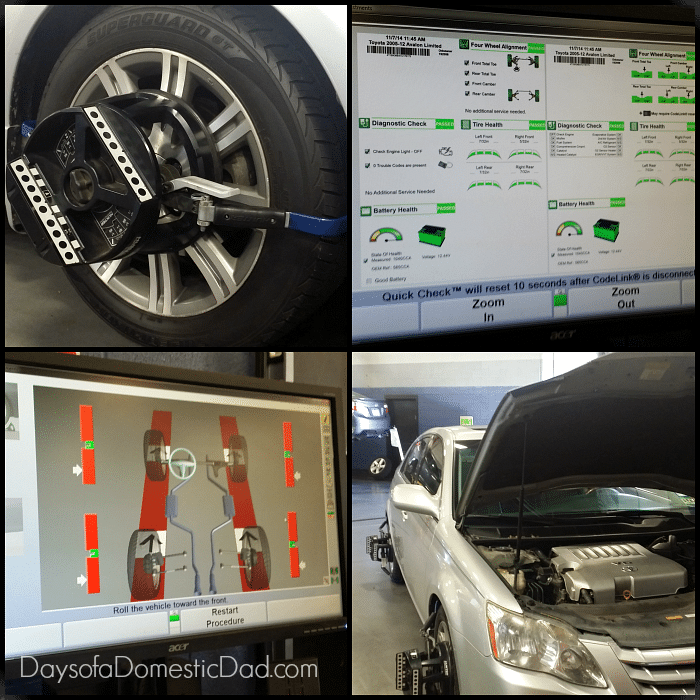Disclosure: As a member of the Rules of the Road Warriors Program I have received compensation to share. All opinions are my own.

Just recently I joined the Sear Auto Rules of the Road Warriors program! This program is aimed at educating people about proper automobile maintenance and car care. This month we are focusing on the In and Outs of Tire Care. So I headed up to my local Sears Auto Center to visit with one of their lead technicians. We talked extensively about tire tread, tread wear, sidewall, and DOT coding. In turn, the experience was great and educational. Please find below 8 things I learned from my visit at my Sears Auto Center.

8 Things to Know When it Comes to Tires
1 – What are the warning signs that I may need new tires?
- Uneven wear and cracking
- Tire tread is below 2/32 if an inch in depth
- There are grooves, tracks or cuts in the sidewall
- Bulges or blisters that extend outward from the rest of the surface

2 – What’s the difference between tire types? Is there a grading system?
- Uniform Tire Quality Grading (UTQG): printed on the sidewall, a tire’s UTQG consists of three factors and is assigned by the tire manufacturer. UTQG is listed as follows: Treadwear XXX Traction X Temperature X. These ratings can be compared within the same brand but not across brands.
- Treadwear: the numeric portion of the UTQG, the tread wear grade is a comparative rating based on the wear rate of the tire when tested under controlled conditions on a specified government test track. Tread wear grades are not a guarantee of actual tire mileage as factors such as driving habits, climate and road characteristics impact tire longevity.
- Traction: traction grades range from AA – C, with AA being the highest and C being the lowest. These grades represent the tire’s ability to stop on wet pavement as measured under controlled conditions on specified government test surfaces of asphalt and concrete.
- Temperature: temperature grades range from A – C with A being the highest and C being the lowest. These grades represent the tire’s resistance to the generation of heat at speed.

3 – Maintain proper tire pressure.
- Under- and over-inflation of tires creates excessive heat and stress, which can lead to tire failure.
- Vehicle manufacturers specify the correct tire pressure for tires; find it on the inside of the driver’s side door or in the vehicle owner’s manual.
- SAC experts recommend checking tire pressure once a month and before big trips.

4 – Rotate your tires regularly
- Tire rotation can prevent irregular tread wear.
- While there’s no universal recommendation for rotating your tires, the vehicle owner’s manual contains mileage recommendations for rotation.
- SAC recommends rotation every 5,000 to 8,000 miles if no recommendation is listed.

5 – Visually inspect your tires
- Check tires routinely for any objects which may have penetrated the exterior.
- Sidewalls may show bulges, gouges, cuts or irregularities.
- Check the tread to make sure there are no unusual tread wear patterns which could indicate larger issues like misalignment.

6 – Check your alignment
- Improper alignment can cause premature tread wear.
- Have alignment regularly checked by experts to help lengthen the life of your tires and prevent premature or irregular tread wear.

7 – Do the penny test
- Tires with worn tread have reduced traction and are more likely to hydroplane or fail.
- Use a penny to check your tires’ tread depth: when holding a penny upside down, if the top of Abe Lincoln’s head doesn’t disappear within the tread, your tires are unsafe and need to be replaced.
8 – Monitor tire age
- Tires usually last between three and five years, depending on climate and driving patterns.
